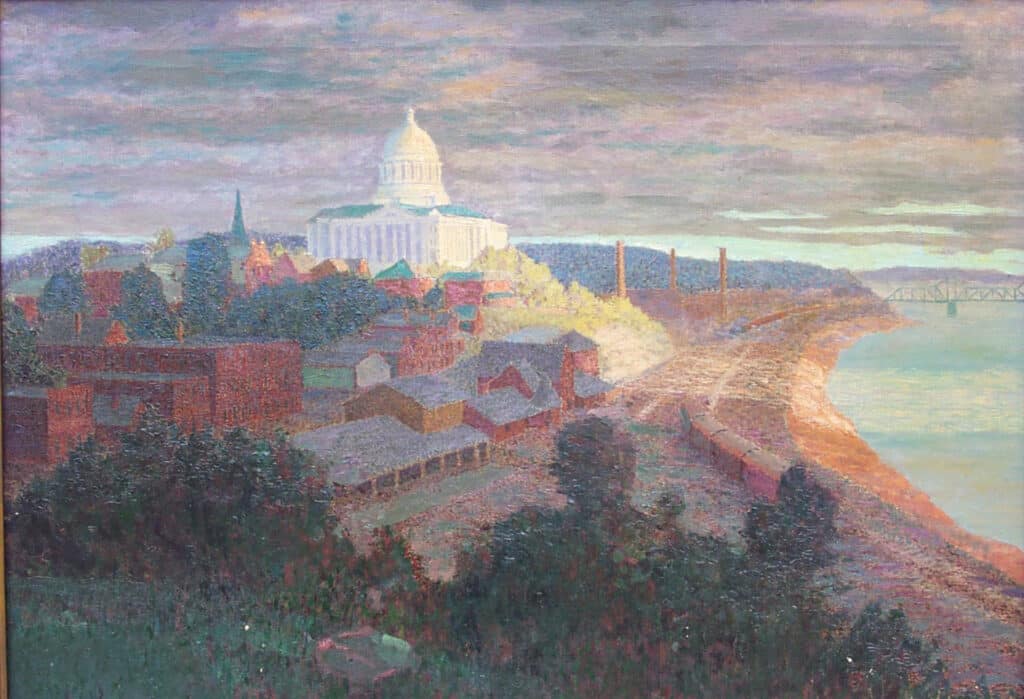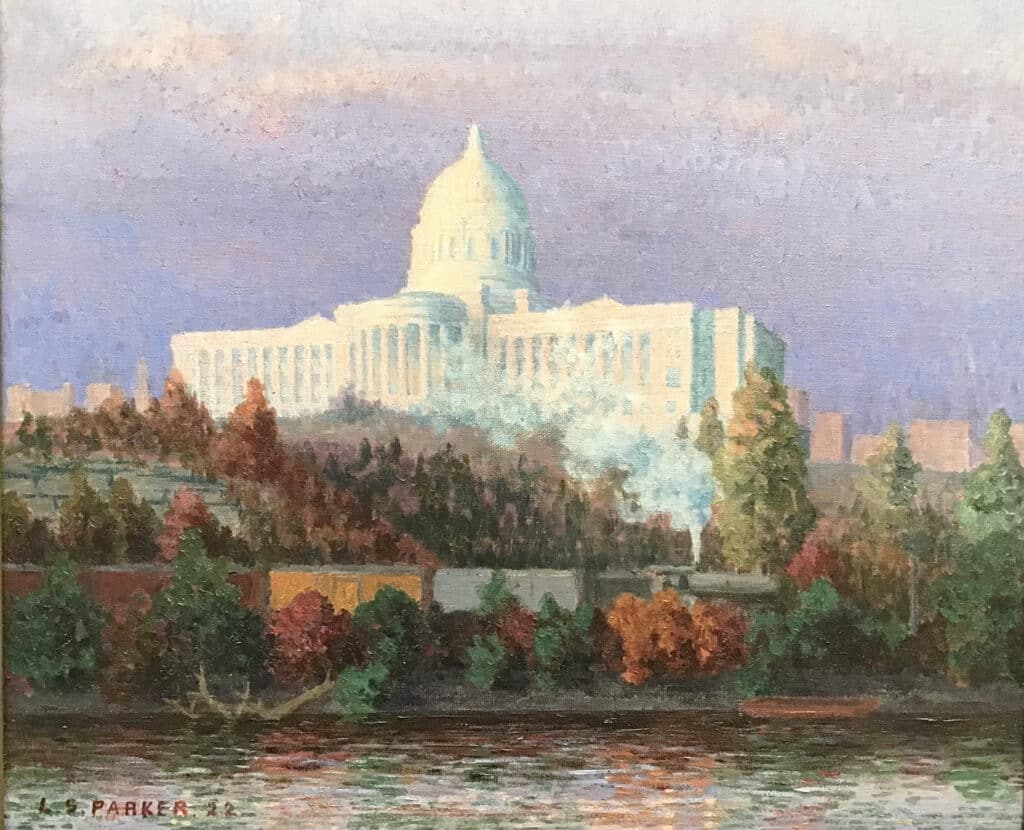A capitol impressionist ahead of his time.

Our artist this week lived from 1860–1925 and was ahead of his time as an impressionist. Shoe manufacturer Lester Shepard Parker was a prominent Jefferson City businessman who was best known during his lifetime as the 1895 founder of the L. S. Parker Shoe Company, which distributed working men’s shoes to a nationwide clientele from a factory inside the Missouri State Penitentiary.
Parker’s approach to painting is particularly interesting because it reflects a sophisticated understanding of European impressionism, a style still seen as avant-garde in the 1920s. He repeatedly painted Missouri’s new state capitol building in varying light and atmospheric conditions with loose, impressionistic brushstrokes and vibrant colors.
Before settling in Missouri, Parker studied law in his native Massachusetts and traveled widely. In 1895, Parker moved to Jefferson City and contracted with the State of Missouri for the use of its prison and prisoners to manufacture goods. He founded the L.S. Parker Shoe Company with its factory within the walls of the state penitentiary. His neoclassical revival home at 624 East Capitol Avenue is on the National Register of Historic Places.
Parker’s 1924 book on the decorations, State Capitol of Missouri, is still considered an important text on the subject. His exposure to the government-commissioned artwork, together with his love of the new statehouse, surely contributed to his interest in creating strikingly modern pictures of the building.
Lester Shepard Parker’s paintings feature the Missouri State Capitol from different angles in a different light. They include Night View, State Capitol, Afternoon View on Ware’s Creek, and Sunrise View of the State Capitol.

Sunset View from the River is a 1922 painting depicting the statehouse from the river, but in very different chromatic conditions. The shadows are now vivid teal and the light illuminating the marble facade varies in color from pink to warm pearl tones. In this picture, Parker adds an image of a train chugging down the riverside tracks as it billows pale blue steam across the landscape. Like the French impressionists, Parker was not only interested in representing the optical effects of natural phenomena, but he also concerned himself with depicting the way transient aspects of technology, such as smoke and steam, affect perception. Parker similarly made an effort to represent Missouri’s new state capitol in the context of the vibrant and growing industrial economy of Jefferson City.
Although his work is in the collection of the Missouri Governor’s Mansion, the Jefferson City Chamber of Commerce, The Cole County Historical Society, and the State Historical Society of Missouri in Columbia, Parker deserves a far greater degree of recognition as a Missouri artist of skill and vision.
This article first appeared in the September 2022 issue of Missouri Life. For the full story by Joan Stack, Curator of Art Collections, and more of the artist’s images, check out The State Historical Society of Missouri, Columbia.
Related Posts
My Missouri Life
Missouri Life magazine's new editor-in-chief, Sandy Selby, greets readers through the My Missouri Life column.
I popped up from my nest of pillows and books in the back of the family station wagon and announced, “I’m going to live in Missouri when I grow up.” I made that declaration at age nine as my family traveled from our home in northeastern Oklahoma to Branson for a vacation.
November 30, 1915
This date in Missouri history. Henry T. Smith was crushed while quarrying stone for the new Missouri Capitol Building.
Revitalizing Missouri Downtowns
Here’s how Missourians are working together to revitalize downtowns across the state.



